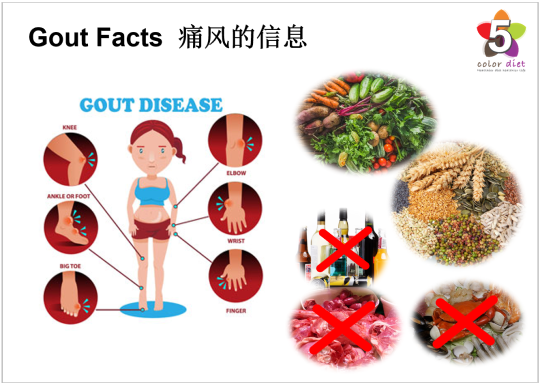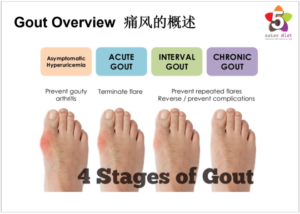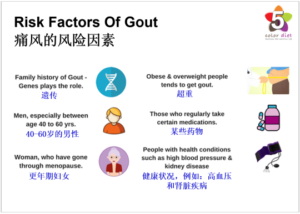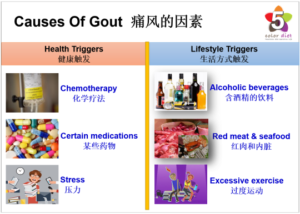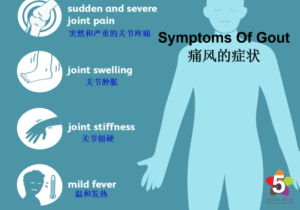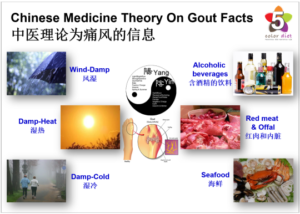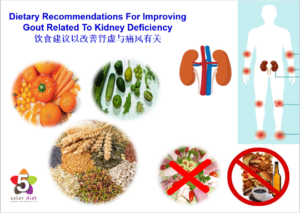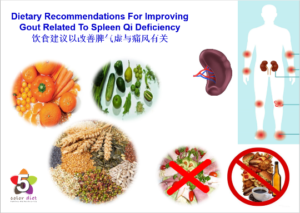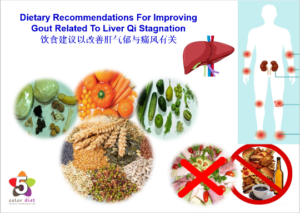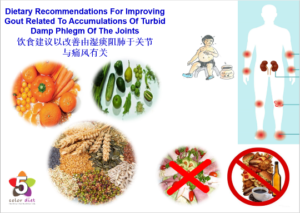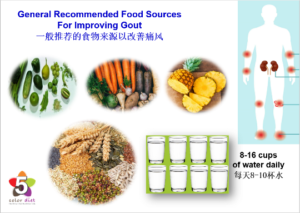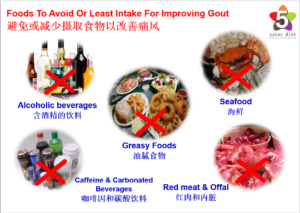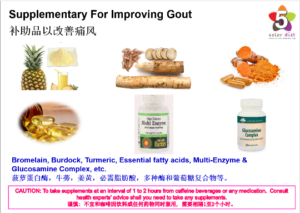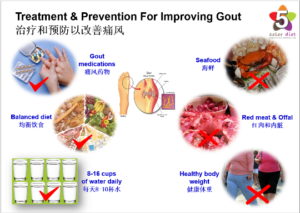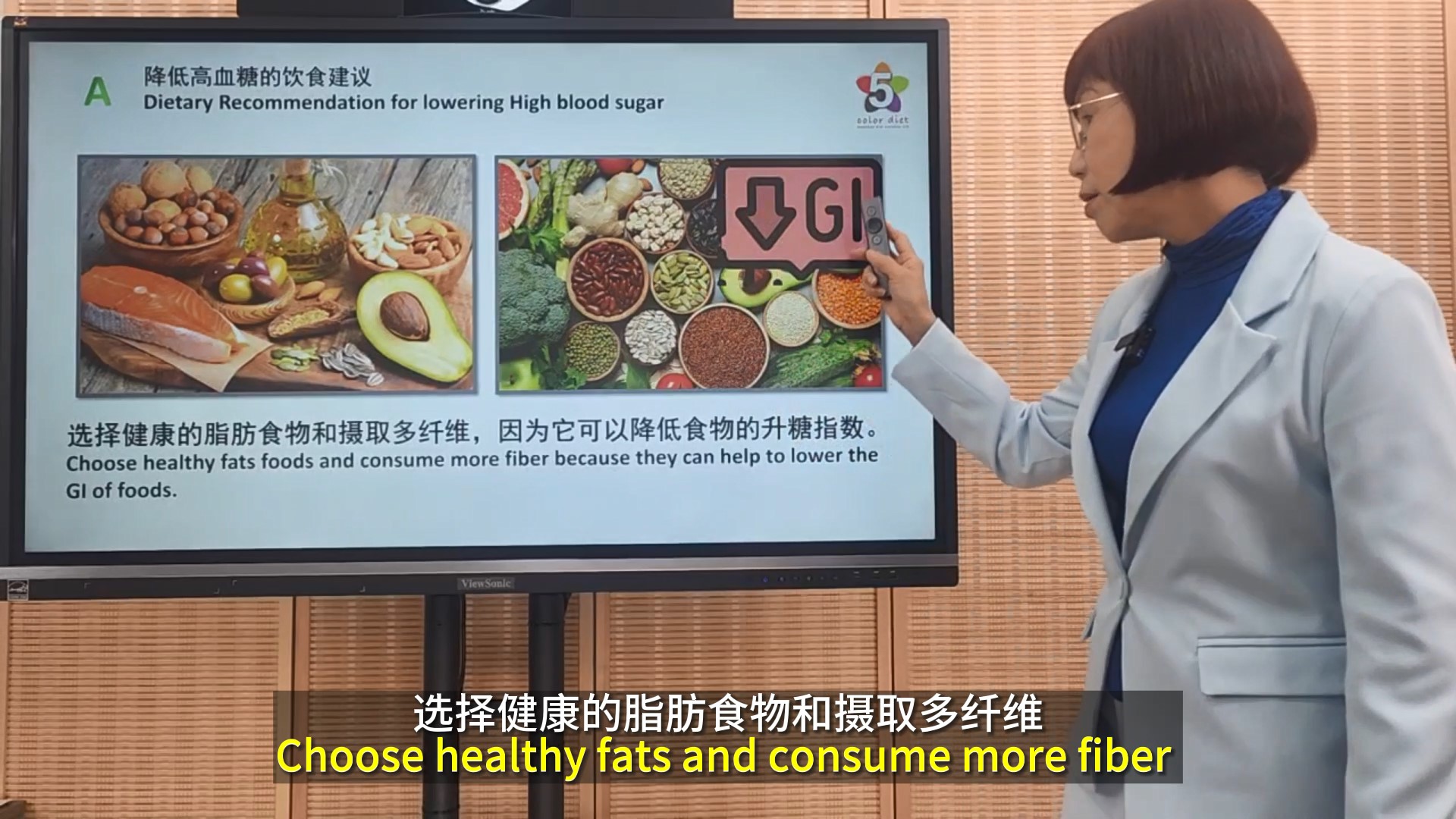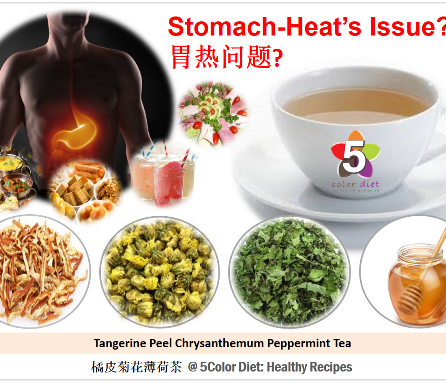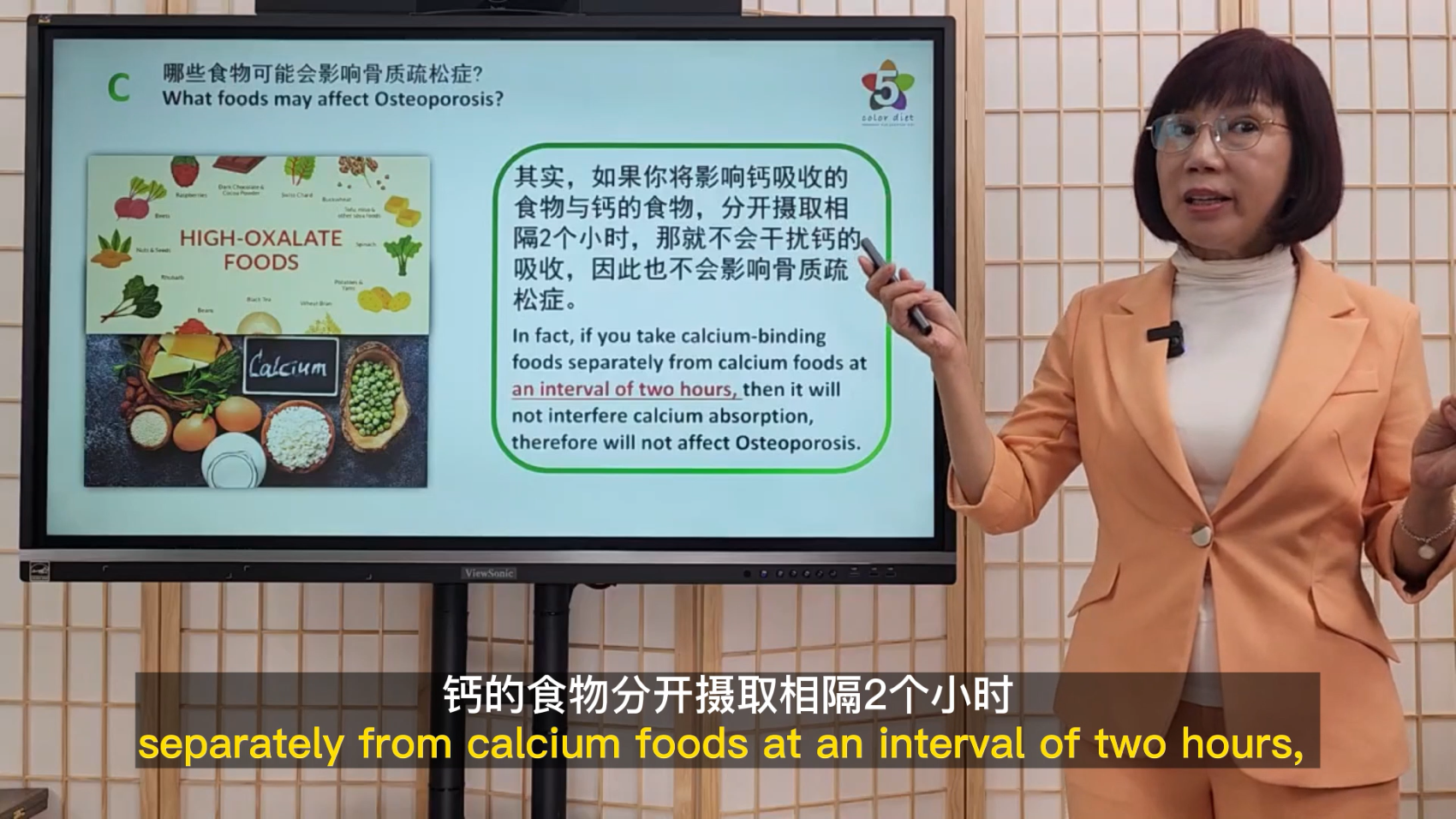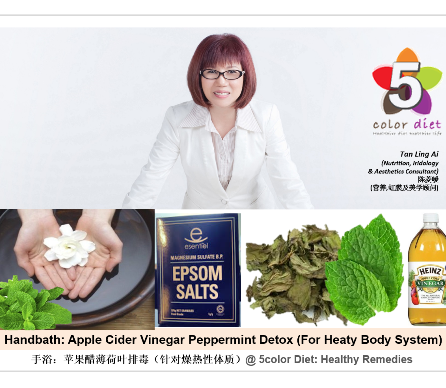
Gout Overview
Gout was first identified as early as 2,640 BC by the ancient Egyptians. But, despite its long history, gout remains a major public health concern, with an increasing number of people suffering from what can be an extremely painful condition.
Gout is caused initially by an excess of uric acid in the blood (hyperuricemia). Uric acid is produced in the body during the breakdown of purines – chemical compounds that are found in high amounts in certain foods such as meat, poultry, and seafood. Normally, Uric acid is dissolved in the blood and is excreted from the body in urine via the kidneys. If too much Uric acid is produced, or not enough is excreted, it can build up and form needle-like crystals that trigger inflammation and pain in the joints and surrounding tissue.
Gout frequently affects the large joint of the big toe, but can also affect the ankles, knees, elbows, wrists, and fingers. Gout attacks often occur without warning in the middle of the night. Gout attacks can last a few days or many weeks before the pain goes away. Another Gout attack may not happen for months or years. These Gout attacks can happen over and over unless Gout is treated. Over time, they can harm your joints, tendons, and other tissues. It is the most common form of inflammatory arthritis in men, and although it is more likely to affect men, women become more susceptible to it after the menopause.
Most of the time, having too much Uric acid is not harmful. Many people with high levels in their blood never get Gout. But when Uric acid levels in your blood are too high, the Uric acid may form hard crystals in your joints. Your chances of getting gout are higher if you are overweight, drink too much alcohol, or eat too much meat and seafood that are high in chemicals called purines. Some medicines, such as water pills (diuretics), can also bring on Gout.
In some cases, Gout can develop into more serious conditions, such as:
- Kidney Stones: If urate crystals deposit in the urinary tract, they can become kidney stones or urinary stones.
- Recurrent Gout: Some people only ever have one flare up while others may have regular recurrences, causing gradual damage to the joints and surrounding tissue.
There are 4 Phases of Gout
(1) Asymptomatic Hyperuricemia: It is possible for a person to have hyperuricemia (elevated uric acid levels) without any outward symptoms. At this stage, treatment is not required, though urate crystals are being deposited in tissue and causing slight damage. People with Asymptomatic Hyperuricemia may be advised to take steps to address any possible factors contributing to Uric acid build-up.
(2) Acute Gout: This stage occurs when the urate crystals that have been deposited suddenly cause acute inflammation and intense pain. This sudden attack is referred to as a “flare” and will normally subside within 3-10 days. Flares can sometimes be triggered by stressful events, alcohol and drugs, as well as cold weather.
(3) Interval or Inter-critical Gout: This stage is the period in between attacks of Acute Gout. Subsequent flares may not occur for months or years, though if not treated, over time, they can last longer and occur more frequently. During this interval, further urate crystals are being deposited in tissue.
(4) Chronic Tophaceous Gout: Chronic Tophaceous Gout is the final stage and the most debilitating form of Gout. Permanent damage may have occurred in the joints and the kidneys. The patient can suffer from chronic arthritis and develop tophi like big lumps of urate crystals in cooler areas of the body such as the joints of the fingers. It takes a long time without treatment to reach the stage of Chronic Tophaceous Gout around 10 years. It is very unlikely that a patient receiving proper treatment would progress to this stage.
One condition that is easily confused with Gout is Pseudogout. The symptoms of Pseudogout are very similar to those of Gout. The major difference between Gout and Pseudogout is that the joints are irritated by calcium phosphate crystals rather than urate crystals. Pseudogout requires different treatment.
Risk Factors Of Gout
● Age & Gender: Men produce more Uric acid than women, though women’s levels of Uric acid approach those of men after the menopause.
● Genetics: A family history of Gout increases the likelihood of the condition developing.
● Lifestyle Choices: Alcohol consumption interferes with the removal of uric acid from the body. Eating a high-purine diet also increases the amount of uric acid in the body.
● Have an enzyme defect that makes it hard for the body to break down purines.
● Have had an organ transplant.
● Take Niacin (Vitamin B3) more than 100mg.
● Lead Exposure: Chronic lead exposure has been linked to some cases of gout.
● Medications: Certain medications can increase the levels of uric acid in the body, including some diuretics, aspirin, cyclosporine or levodopa and drugs that containing salicylate.
● Overweight: Overweight increases the risk of gout as there is more turnover of body tissue, which means more production of uric acid as a metabolic waste product. Higher levels of body fat also increase levels of systemic inflammation as fat cells produce pro-inflammatory cytokines.
● Recent Trauma or Surgery: Increases risk of gout.
● Other Health Problems: Renal insufficiency and other kidney problems can reduce the body’s ability to efficiently remove waste products, leading to elevated uric acid levels. Other conditions associated with gout include high blood pressure (hypertension), diabetes, and hypothyroidism (underactive thyroid gland).
-
Causes & Symptoms Of Gout
Causes Of Gout
(1) Medical or health triggers of Gout:
● Chemotherapy.
● Joint injury.
● Infections.
● Lead Exposure: Chronic lead exposure has been linked to some cases of gout.
● Taking certain diuretic medications for high blood pressure, leg swelling (edema) or heart failure, including aspirin, cyclosporine & niacin (Vitamin B3), etc.
● Starting a Uric acid-lowering treatment.
● Stress.
● Surgery or sudden, severe illness.(2) Lifestyle triggers of Gout:
● Carbonated beverages.
● Crash diets and fasting.
● Drinking too much alcohol.
● Dehydration (not getting enough fluids). Need to drink 2-4 litres of water daily.
● Eating large portions of foods high in purines (Eg: Alcohol, red meats or shellfish).
● Excessive exercise.Gout is also associated with other serious health risks such as hypothyroidism, high blood pressure, diabetes, chronic kidney disease and cardiovascular disease, etc. The clinical presentation of gout includes frequent attacks of arthritis, joint deformities and urinary stones. This complex form of arthritis is characterized by the onset of sudden and severe pains. Fortunately, Gout is treatable and there are preventative measures that can be taken to reduce the risk of developing the painful condition.
Symptoms Of Gout
The most common form of Gout, at the big toe joint (or more accurately, at the first metatarsal-phalangeal joint) occurs with these symptoms:
● Inflammation, redness and heat.
● Pain: various kinds, including burning and excruciating.
● Sensitivity to touch and pressure.
● Swelling, etc. -
Chinese Medicine’s Theory On Gout Facts
In Chinese Medicine, Gout is seen as a joint painful Bi syndrome caused by wrong lifestyle habits including unregulated eating and drinking, or from external evil pathogens such as Wind-Damp, Damp-Heat or Damp-Cold. Alcohol, rich fatty foods, and fried foods are to be avoided. As gout progresses, Qi and Blood Stasis develop, according to Chinese medicine, creating sharp pain and limited mobility.
Primary Causes of Gout in TCM
Actions or factors that increase propensity to damp-heat.
Foods that damage the Spleen’s action & produce Heat
● Sweet foods: Sweet foods, especially foods and drinks containing fructose, a natural sugar found in fruit, but also in all natural sweeteners including honey, molasses, cane sugar, high fructose corn syrup & beet sugar, etc.
● Alcohol: Alcohol is another form of sugar which will aggravate Gout’s condition.
● Wheat products: Wheat rapidly turns into sugar, the more so when refined, ‘white’ flour. So do other grains, but Wheat seems worse.
● Foods high in purines: Some foods like Alcohol, beans, carbonated & caffeinated beverages, citrus fruits, greasy foods, offal, processed foods, red meat, shellfish, spicy foods, salt, sugar, nightshade vegetables (Eg: chili, eggplant, potatoes & tomatoes), etc.Factors that weaken the flow of Qi & disrupt Spleen Qi
● When Qi stops flowing, problems accumulate, leading to what is called ‘Bi’-syndrome in Traditional Chinese Medicine (TCM) which is caused by Damp-Heat.
● Lack of exercise, and emotional tension, both lead to stagnation of Qi which leads to blockage: Damp-Heat ‘bi’.
● The primary source of Qi is your Lungs, and poor breathing habits, (often allied to lack of exercise and tension), greatly contribute to reduced Qi. One important way of recovering Qi is through good sleep, which is why Sleep Apnoea is a major cause of gout in many people, especially if they have a tendency to Damp. Snoring also hampers the flow of qi, leading to tiredness = Qi deficiency and this can lead to Qi stagnation and Bi. Of course, if you exercise regularly, you’ll tend to breathe deeply, to some extent compensating for sleep apnoea and snoring.
● Poor breathing habits lead to cell death, the catabolic results of which include more uric acid. This increases beyond the amount your body and your blood can handle, leading to their acidification – more yang.
● Too much sugar and lack of exercise also lead to Obesity and Diabetes but they are not really the primary causes of gout. They are often parallel or ‘co’-consequences of poor diet and lifestyle habits.Secondary Causes of Gout in Chinese Medicine
The following syndromes occur as a result of primary actions or factors:
● Swelling reflects Damp, while inflammation reflects Heat. Together they form Damp-Heat and in due course, Phlegm-Heat, which is when it becomes chronically swollen, hard and exquisitely sensitive. The location suggests problems mainly on the Spleen channel, but also the Liver and Kidney channels. The Spleen channel runs from the medial side of the big toe along the medial side of the arch of the foot then up the medial side of the leg. The Liver channel is parallel to the Spleen channel but starts on the lateral side of the big toe. The Kidney channel starts from underneath the big toe and the sole.
● Since Damp and this first location of gout near the big toe are both ‘ruled’ by the Spleen, it suggests that diet is amongst the main culprits, although inherited genes and other factors are important.
● There are other forms of gout in Chinese Medicine, caused by internal underlying factors such as weakened Kidney energy, and external factors such as wind and cold.Some body imbalances related to Gout issues are:
(1) Kidney Deficiency & Gout.
(2) Spleen Qi Deficiency & Gout.
(3) Liver Qi Stagnation & Gout.
(4) Accumulations Of Turbid Damp Phlegm Of The Joints & Gout.
-
Dietary Recommendations For Improving Gout Related To Kidney Deficiency
Uric acid is eliminated mainly through the kidneys. In Chinese Medicine, the Kidney energetic oran system is complex and includes the kidneys, the Kidney (Bladder) acupuncture channels, and a host of other functions. Someone with Gout complicated by Kidney Deficiency may have frequent urination & edema which indicated that the Kidney organ system is not functioning optimally.
Particulars Description Recommended Food Sources For Improving Kidney’s Deficiency Related To Gout ● Bean, Nuts & Seeds: Black beans, chick peas, chestnuts, fava beans, kidney beans, lotus seeds & walnuts, etc. ● Fruits: Dates, cherries, figs, stewed fruits, sugarcane and especially most green/ orange & yellow color fruits, etc.
● Grains: Cooked whole grains (Eg: amaranth, buckwheat, cereals, oats, brown rice, millet & quinoa), roasted barley, etc.
● Herbs & Spices: Black pepper, cinnamon, garlic, ginger, fennel, nutmeg, onions & turmeric, etc.
● Meat & Seafood: Fish (Eg: Anchovy, catfish, eel, mackerel, perch & tuna, etc), beef, black chicken, chicken, goose, mutton, quail & rabbit, etc.
● Vegetables: Carrots, corn, green peas, leeks, mushrooms, parsnips, pumpkin, sweet potatoes, turnips, yam, zucchini and especially most green/ orange & yellow color vegetables, etc.
● Others: Blackstrap molasses, honey, maltose, rice syrup & Teas (Eg: cinnamon, ginger, fennel & nutmeg, etc).
● Food diet should comprise of Proteins only 10-20%, Complex carbohydrates 40-60% like grains and starchy root vegetables & Cooked vegetables 30-40%.
Foods To Avoid Or Least Intake For Improving Kidney’s Deficiency Related To Gout ● Alcohol, caffeine beverages, carbonated beverages, chocolates, citrus fruits, cold or raw foods (Eg: iced drinks, raw meat, salads or white/ tan & brown fruits & vegetables), dairy products (Eg: butter, cheese, eggs, milk except yogurt), fried or greasy foods, processed foods, seaweed, spinach, soybean products except miso paste & tempeh, tomatoes, wheat products and refined sugars (Eg: biscuits, cakes & pastries), etc. ● Avoid smoking & stress.
-
Dietary Recommendations For Improving Gout Related To Spleen Qi Deficiency
Internal Dampness is commonly a result of Spleen Deficiency according to Chinese Medicine. With Gout, there is often a pattern of Damp Heat presenting seen as inflammation, swelling, and redness during Gout attacks. The Spleen energetic organ system in Chinese medicine is associated with digestion and how one utilizes food; this can be correlated with the body’s inability to process purine rich foods efficiently. Spleen Qi tonics are required over a number of many months to actually address Spleen Qi Deficiency if it is a clear indication.
Particulars Description Recommended Food Sources For Improving Spleen Qi Deficiency Related To Gout ● Bean, Nuts & Seeds: Black beans, chick peas, chestnuts, fava beans, kidney beans, lotus seeds & walnuts, etc. ● Fruits: Dates, cherries, figs, stewed fruits, sugarcane, especially most green/ orange & yellow color fruits, etc.
● Grains: Cooked whole grains (Eg: amaranth rice, buckwheat, cereals, oats, brown rice, millet & quinoa), hulled wheat, roasted barley, etc.
● Herbs & Spices: Black pepper, cinnamon, garlic, ginger, fennel, nutmeg, onions & turmeric, etc.
● Meat & Seafood: Fish (Eg: Anchovy, catfish, eel, mackerel, perch & tuna, etc). In moderation for beef, chicken, duck & mutton, etc.
● Vegetables: Carrots, corn, green peas, leeks, mushrooms, parsnips, pumpkin, sweet potatoes, turnips, yam, zucchini especially most green/ orange & yellow color vegetables, etc.
● Others: Blackstrap molasses, maltose, rice syrup and Teas (Eg: cinnamon, ginger, fennel & nutmeg, etc).
● Food diet should comprise of Proteins only 10-20%, Complex carbohydrates 40-60% like grains and starchy root vegetables & Cooked vegetables 30-40%.
Foods To Avoid Or Least Intake For Improving Spleen Qi Deficiency Related To Gout ● Alcohol, caffeine beverages, carbonated beverages, citrus fruits, cold or raw foods (Eg: iced drinks, salads or white/ tan & brown fruits & vegetables), dairy products (Eg: butter, cheese, eggs & milk except yogurt), fried or greasy foods, processed foods, seaweed, spinach, sprouts, soybean products, tomatoes, wheat products & refined sugars (Eg: biscuits, cakes & pastries), etc. ● Avoid smoking & stress.
-
Dietary Recommendations For Improving Gout Related To Liver Qi Stagnation
In Chinese medicine, the Liver energetic organ system governs over the tendons; thus, any disease affecting the joints points towards a Liver imbalance. In cases of Gout, the Liver energy is stagnated, heats up, combines with pathogenic Damp factors, and causes Damp Phlegm to begin to condense. It may take 6-8 months to sooth the Liver energy.
Particulars Description Recommended Food Sources For Improving Liver Qi Stagnation Related To Gout ● Beans, Nuts & Seeds: Almonds, beancurd, Chinese almonds, red beans & walnuts, etc. ● Fruits: Black dates, cherries, citrus fruits, grapefruits, hawthorn fruit, loquats, red dates, tangerines, tangerine peel, especially most green/ orange& yellow color fruits, etc.
● Grains: Barley, buckwheat, Chinese barley & white rice, etc.
● Herbs & Spices: Basil, caraway seeds, cardamom, cumin, dill, fennel, garlic, ginger, horseradish, mustard seeds, onions, peppers, peppermint leaves & turmeric, etc.
● Meat & Seafood: All fishes.
● Vegetables: Artichokes, asparagus, beets, broccoli, Brussel sprouts, cabbage, carrots, cauliflower, celery, Chinese chives, Chinese radish, lily bulbs, kelp, mustard greens, pickled vegetables, pumpkin, seaweed, sweet potatoes, turnips, watercress, water chestnuts, wheat, yam, zucchini, especially most green/ orange & yellow color vegetables, etc.
● Others: Blackstrap molasses, olive oil and Teas (Eg: Chamomile, chrysanthemum, ginger, jasmine flowers, milk thistle, mulberry leaves, peppermint leaves, rosebuds & saffron), etc.
● Food diet should comprise of Proteins only 10%, Complex carbohydrates 30% like grains and starchy root vegetables & Cooked vegetables 40-60%.
Foods To Avoid Or Least Intake For Improving Liver Qi Stagnation Related To Gout ● Alcohol, all nuts & seeds except those stated in Recommended food sources, caffeine beverages, carbonated beverages, cheese, chocolate, cold or raw foods (Eg: iced drinks, salads or white/ tan & brown fruits & vegetables), dairy products (Eg: butter, cheese, eggs & milk except yogurt), fried or greasy foods, grains (Eg: Brown rice & millet), processed foods, raw vegetables juices, refined sugars (Eg: biscuits, cakes & pastries), red meat, salt, spicy foods & tomatoes, etc. ● Avoid smoking & stress.
-
Dietary Recommendations For Improving Gout Related To Accumulations Of Turbid Damp Phlegm Of The Joints
Herbs can help to more efficiently purge the body of Uric acid build up. While these herbs can result in some immediate relief, the relief will only be temporary until the underlying causes mentioned above are thoroughly resolved. These herbs both drain Uric acid through the kidneys, and are alkaline for acid build up in the blood. Herbs: Alfalfa, Bilberry, Bromelain, Buchu, Burdock, Chamomile, Cat’s claw, Cayenne, Celery seed, Corn Silk, Devil’s Claw, Garlic, Grape seed, Horsetail, Kelp, Nettle, Noni, Olive leaf, Peppermint, Turmeric, Willow Bark & Yucca, etc.
Particulars Description Recommended Food Sources For Improving Lungs Obstructed By Damp-Phlegm Related To Gout ● Beans, Nuts & Seeds: Almonds, black beans, chick peas, Chinese almonds, cow peas, fava beans, gingko nuts, hyacinth bean, kidney beans, lotus seeds, red beans, miso paste & tempeh, etc. ● Fruits: Berries, dates, figs, lemon peel, loquats, olives, plums, red dates, stewed fruits (Eg: Cherries, grapefruit, kumquats & pears, etc), sugar cane and especially most green/ orange & yellow color fruits, etc.
● Grains: Barley, buckwheat, corn, Chinese barley, millet, roasted oats, rye, white rice, etc.
● Herbs & Spices: Basil, black pepper, chillies, cardamom, cloves, fennel, garlic, ginger, horseradish, licorice, lotus leaf, mustard, onions, shallots, tamarind, thyme & turmeric, etc.
● Meat & Seafood: Chicken, black chicken, goose, frog, lean meats, rabbit, quail, seafood & fish (Eg: Anchovy, catfish, eel, mackerel, perch & tuna), etc.
● Vegetables: Alfalfa sprouts, asparagus, bamboo shoots, cabbage, carrots, celery, Chinese yam, corn, cucumber, green peas, kelp, leeks, lily bulbs, mushrooms, mustard greens, parsnips, pumpkin, radish, seaweeds, turnips, water chestnuts, watercress, wax gourd, white fungus, zucchini and especially most green/ orange & yellow color vegetables, etc.
● Others: Barley malt, rice syrup, sourdough breads & Teas (Eg: Chrysanthemum, Chrysanthemum leaves, green tea, jasmine flowers, raspberry leaves, rose buds), etc.
● Food diet should comprise of Proteins only 10%, Complex carbohydrates 30-40% like grains and starchy root vegetables & Cooked vegetables 40-50%.
Foods To Avoid Or Least Intake For Improving Lungs Obstructed By Damp-Phlegm Related To Gout ● Alcohol, avocados, caffeine beverages, carbonated beverages, chocolate, citrus fruits, cold or raw foods (Eg: iced drinks, raw meat, salads or white/ tan & brown fruits & vegetables), dairy products (Eg: butter, cheese, eggs, milk except yogurt, fried or greasy foods, peanuts, processed foods, red meat, salt, seaweed, soybean products except miso paste & tempeh, wheat products & refined sugars (Eg: biscuits, cakes & pastries), etc. ● Excessive of Vitamin C (Not more than 3,000 mg).
● Avoid furry animals, smoking & stress.
-
General Recommended Food Sources For Improving Gout
● Alfalfa, apples (Including apple cider vinegar), avocado, berries-all, broccoli, brown rice, Brussels sprouts, chamomile, cartilage of poultry/ animals, cauliflower, celery, cheese, corn, eggs, fish, flaxseeds, garlic, green leafy & root starchy vegetables, kelp, millet, molasses, nuts, oats, oat bran, onions, peas, peppermint, rice bran, rye, sea cucumber, seeds, soybean products, strawberries, turmeric, whole grains, etc
● Pineapple Juice Relieves Gout’s Pain & Inflammation: Pineapple is the only fruit which contains Bromelain & is a combination of enzymes, called proteolytic enzymes, that help your body absorb and assimilate proteins from foods, according to the University of Maryland Medical Center. Studies have found that bromelain helps to decompose uric acid crystals, relieving you from the pain related with gout. Bromelain has also been shown to prevent repeated gout attacks. Vitamin C, which is one of the primary ingredients in pineapple, has been shown to be effective in lowering uric acid levels in the blood. Pineapple contains potassium, which has been shown to be helpful in turning uric acid into a solution that your kidney can excrete effortlessly during urination. Pineapple nutrients, including potassium, bromelain, Vitamin C, Vitamin B1, Vitamin B2, Vitamin B3, Vitamin B5, Vitamin B6, manganese, and copper, all of which play a significant role in reducing inflammation and pain.
It is recommended to drink a cup of fresh pineapple juice once or twice a day before a meal or consume a slice or two of fresh pineapple at a couple of meals a day or as a snack. Among popular fruits such as apple, grapes, watermelon and plums, pineapple is the lowest in fructose. Research shows that high fructose intake can increase the level uric acid in the blood, leading to gout. Because pineapple is a low in fructose, it can be used freely to fulfil the 2 to 3 servings per day recommended by experts. For those who have acid reflux, weak or sensitive stomach, take Pineapple in moderation because Pineapple has acidic content which may aggravate their conditions.
● Drink plenty of fluids: Staying hydrated helps flush out uric acid and prevent kidney stones. Drink 8-16 cups of water daily, which includes beverages and soups.
-
General Avoidance Or Least Intake Of Foods For Improving Gout
(1) Gout diet: Individuals with Gout should avoid low-carbohydrate diets. Low intake of carbohydrate means that the body is unable to properly burn fat stores, leading to the release of substances called ketones into the bloodstream. This rise in ketones can result in a condition called ketosis that can increase the level of Uric acid in the blood.
(2) High-purine foods: It is most important to avoid foods that are high in purines, to ensure that the levels of Uric acid in the blood do not get too high. Some examples are:
● Anchovies.
● Asparagus
● Beans & peas.
● Fish like Herring, mackerel, sardine,
● Mushrooms.
● Offal.
● Red meat.
● Seafood like clams, cockles, crayfish, prawns & scallops, etc.
scallops
● Wheat products like biscuits, cakes & sweetbreads, etc.(3) Others: Alcohol, beans, carbonated & caffeinated beverages, citrus fruits, greasy foods, processed foods, spicy foods, salt, sugar, nightshade vegetables (Eg: chili, eggplant, potatoes & tomatoes), etc.
● Moderate intake of Vitamin B3 (<100mg daily). Some foods high in Vitamin B3 are: Animal livers & kidneys, avocado, brewer’s yeast, cereals, dates, eggs & milk, figs, fish, legumes, meat, nuts, poultry, prunes, wheat germ, whole grains, etc.● Though some other plant-based foods like asparagus, beans, mushrooms are also sources of purines, but research suggests that these do not trigger gout attacks and do not impact uric acid levels. Various epidemiological studies have shown that purine-rich vegetables, whole grains, nuts and legumes, and less sugary fruits, coffee, and vitamin C supplements decrease the risk of gout, whereas red meat, fructose-containing beverages & alcohol increase the risk.
-
Supplementary For Improving Gout
● Herbs: Alfalfa, Bilberry, Bromelain, Buchu, Burdock, Chamomile, Cat’s claw, Cayenne, Celery seed, Corn Silk, Devil’s Claw, Garlic, Grape seed, Horsetail, Kelp, Nettle, Noni, Olive leaf, Peppermint, Turmeric, Willow Bark & Yucca, etc.
● Amino Acids, Vitamins & Minerals: L-Cysteine, L-Histidine, Vitamin A, Vitamin B complex, Vitamin C with Bioflavonoids, Vitamin D3, Vitamin E, Multi-Enzyme, Multi-Vitamins Without Iron, Calcium, Copper, Co-Enzyme Q10, Magnesium, Potassium, Chondroitin, Essential fatty acids, Fish liver oil, Glucosamine, Methylsulfonylmethane (MSM), Sea Cucumber, Shark Cartilage & Superoxide Dismutase, etc.Note:
(1) To take supplements at an interval of 1 to 2 hours from caffeine beverages or medication.
(2) Consult health experts’ advice shall you need to take any supplements, especially if you are pregnant, breastfeeding or having any medical conditions.
- Alternative Therapies For Improving Gout
-
Treatment & Prevention For Improving Gout
The majority of Gout cases are treated with medication. Medication can be used to treat the symptoms of Gout attacks, prevent future flares, and reduce the risk of Gout complications such as kidney stones and the development of tophi. Commonly used medications include nonsteroidal anti-inflammatory drugs (NSAIDs), colchicine, or corticosteroids. These reduce inflammation and pain in the areas affected by Gout and are usually taken orally. Medications can also be used to either reduce the production of Uric acid (xanthine oxidase inhibitors such as Allopurinol) or improve the kidney’s ability to remove Uric acid from the body (Probenecid).
There are many lifestyle and dietary guidelines that can be followed to protect against future flares or prevent Gout from occurring in the first instance:
● Maintain a high fluid intake (2-4 liters a day)
● Avoid alcohol
● Maintain a healthy body weight
● Eat a balanced diet
● Limit fish, meat, and poultry intake












